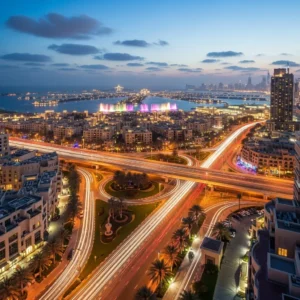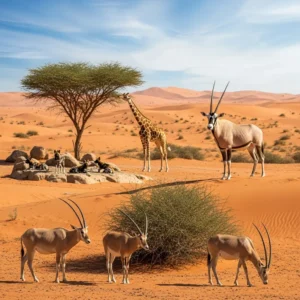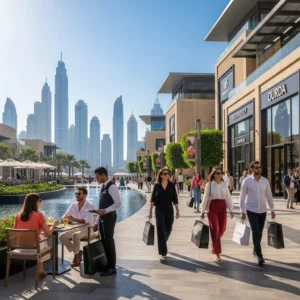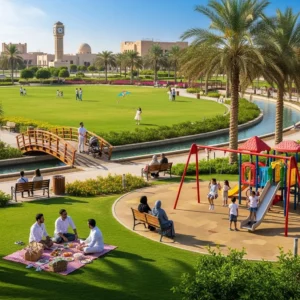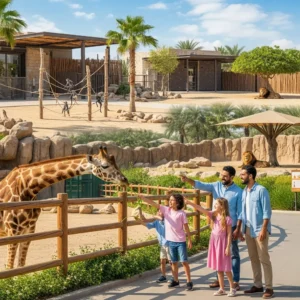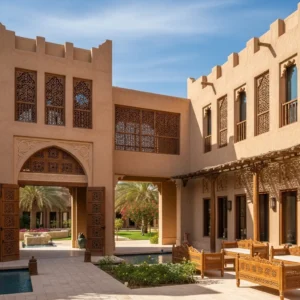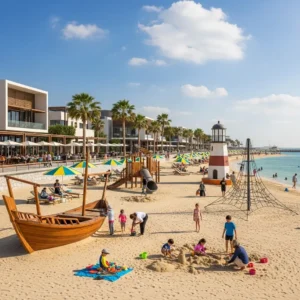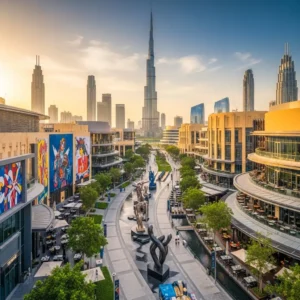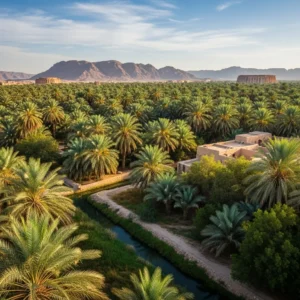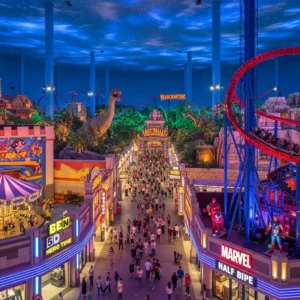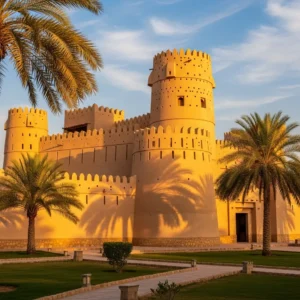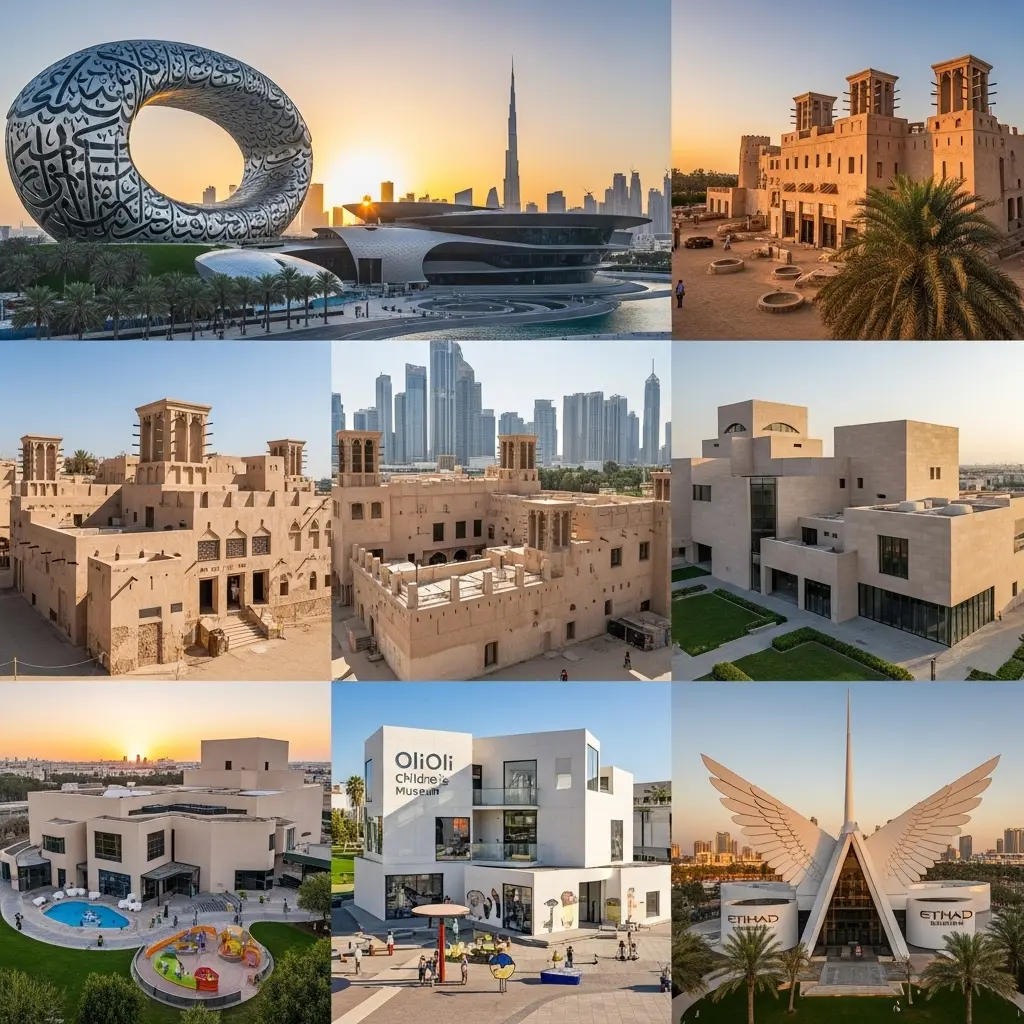Beyond the Gleam: Uncovering Dubai’s Soul Through Its World-Class Museums
When you picture Dubai, your mind likely conjures images of towering skyscrapers, lavish malls, and sun-drenched beaches. But beyond this gleaming facade of modernity lies a city with a rich, multi-layered history and a burgeoning cultural scene that is as dynamic as its skyline. The story of Dubai, from a humble pearling village to a global metropolis, is a fascinating tale, and the best place to uncover it is within the walls of its exceptional museums.
Embarking on a journey through the best Dubai museums is to travel through time. It’s a chance to stand in the city’s oldest fort, to witness the birth of a nation, and to step into a breathtaking vision of the future, all within a few square kilometers. These cultural institutions are not dusty relics; they are vibrant, interactive spaces that challenge perceptions and tell compelling stories. For any visitor wanting to understand the true soul of this incredible city, exploring the diverse landscape of Dubai museums is an absolute necessity.
The Museum of the Future: A Glimpse into Tomorrow
Standing as a shimmering silver torus adorned with Arabic calligraphy, the Museum of the Future is not just a building; it’s an architectural masterpiece and a bold statement of intent. It has instantly become one of the most iconic Dubai museums, dedicated not to the past, but to the possibilities of the next 50 years and beyond. A visit here is an immersive, multi-sensory journey that feels more like stepping into a science fiction film than a traditional museum.
The Architecture of Aspiration
The building itself is a marvel of engineering and symbolism. The circular structure represents humanity, the green mound it sits upon represents the Earth, and the void in the center represents the unknown future and all its potential. The intricate calligraphy that covers its stainless-steel facade are quotes from H.H. Sheikh Mohammed bin Rashid Al Maktoum about his vision for the future, making the building itself a piece of art that speaks.
An Experiential Journey Through the Floors
The experience inside is divided into several distinct chapters, each occupying a different floor. Your journey begins with a simulated rocket launch that takes you to the OSS Hope, an orbital space station. Here, you can explore humanity’s potential future in space.
From there, you descend back to Earth and into the “Heal Institute,” a breathtaking digital recreation of the Amazon rainforest. This exhibit explores themes of ecology, biodiversity, and climate change in a deeply engaging way. The next floor, “Al Waha” (The Oasis), is a sanctuary for the senses, a place to disconnect from technology and reconnect with yourself through a series of therapeutic, interactive installations. For younger visitors, the “Future Heroes” floor is a dedicated play space designed to encourage skills like collaboration and critical thinking. The Museum of the Future is a must-visit among all Dubai museums for its innovative approach.
Etihad Museum: The Birthplace of a Nation
Nestled beside the historic Union House, where the treaty was signed in 1971, the Etihad Museum is a profoundly important cultural landmark. It is dedicated to telling the story of the formation of the United Arab Emirates. The museum’s stunning, modern architecture, designed to resemble a manuscript, is symbolic of the agreement that united the seven emirates.
A Journey Through Modern History
Inside, the museum takes visitors on a chronological journey through the years leading up to the unification. Through a series of interactive exhibits, documentary films, and carefully preserved artifacts, you will learn about the social, political, and economic conditions of the region before 1971.
One of the most powerful sections is dedicated to the founding fathers of the UAE, with detailed profiles and personal belongings that offer a glimpse into their lives and visionary leadership. The museum is designed to be an emotional and educational experience, culminating in a walk through the original Union House building, where you can stand in the very room the nation was born. A visit to the Etihad Museum provides crucial context for understanding the modern UAE and its rapid development. It is one of the most significant Dubai museums for anyone interested in the nation’s history.
Dubai Museum & Al Fahidi Fort: A Step Back in Time
To understand Dubai’s present, you must first explore its past, and there is no better place to do so than at the Dubai Museum, housed within the Al Fahidi Fort. The fort itself is believed to be the oldest existing building in the city, dating back to 1787. It has served as a ruler’s residence, a seat of government, and a prison, and its coral-block walls have witnessed the city’s entire transformation.
Life Before Oil
While the fort itself is impressive, the true treasure lies in the modern, underground museum built beneath it. Here, a series of life-sized dioramas and galleries vividly recreate the Dubai of the past. You can walk through a bustling souk from the 1950s, complete with realistic sounds and projections.
Other exhibits showcase the centrality of the sea to early life in Dubai, with fascinating displays on pearl diving, fishing, and traditional dhow boat building. You will see recreations of desert life, showcasing Bedouin tents and the importance of the date palm. This immersive experience offers a powerful contrast to the modern city outside and is a fundamental stop on any tour of Dubai museums.
Al Shindagha Museum: The Story of the Creek
Located on the banks of the historic Dubai Creek in the Al Shindagha Historical Neighbourhood, this is not a single building but a collection of beautifully restored traditional houses, each dedicated to a different aspect of Emirati culture and history. It’s a modern, world-class museum complex that uses cutting-edge technology to tell the city’s story.
The Perfume House
One of the most unique pavilions is the Perfume House. It takes you on a fragrant journey through the history of Emirati perfume-making, a deeply ingrained part of the local culture. You will learn about the traditional ingredients, from oud and saffron to roses and musk, and the intricate methods used to create these alluring scents. Interactive displays allow you to experience the different aromas and understand their significance in Emirati hospitality and daily life.
The Story of the Creek
The largest and most central exhibit is “The Story of the Creek.” This pavilion serves as the heart of the Al Shindagha Museum, explaining the pivotal role the creek has played in Dubai’s development. Through state-of-the-art multimedia displays, historical artifacts, and personal testimonies, you’ll learn how this waterway enabled trade, pearling, and fishing, laying the foundations for the global city we see today. It’s a masterful piece of storytelling and a highlight of the Dubai museums landscape.
Jameel Arts Centre: A Hub for Contemporary Creativity
Proving that the city’s cultural ambitions are firmly focused on the future as well as the past, the Jameel Arts Centre is a beacon for contemporary art and culture in the region. Located on the Jaddaf Waterfront, its elegant, minimalist architecture of white colonnades and courtyards creates a serene space for the appreciation of art.
A Platform for Regional and Global Artists
The Jameel Arts Centre is a non-profit institution dedicated to showcasing artists from the Middle East and beyond. The center features a rotating series of compelling temporary exhibitions, ensuring that there is always something new and thought-provoking to see. It’s not a museum with a permanent collection in the traditional sense, but rather a dynamic space for dialogue and discovery.
Beyond the galleries, the center is home to an extensive arts library, a rooftop sculpture park, and a restaurant. It hosts regular workshops, talks, and film screenings, making it a vibrant community hub for creatives and art lovers. A visit here offers a completely different perspective on the culture of Dubai, highlighting its role as a growing center for contemporary creative expression.
Planning Your Cultural Itinerary
A tour of Dubai museums can be a full-day adventure or spread across several days. To make the most of your time, a little planning is key.
Geographical Grouping
Many of the city’s key historical museums are clustered around the Dubai Creek. You can easily spend a full day in the Al Fahidi Historical Neighbourhood, visiting the Dubai Museum, the Coin Museum, the Coffee Museum, and then taking a traditional abra boat across the creek to explore the Al Shindagha Museum. This allows you to immerse yourself in the atmosphere of “Old Dubai.”
The Museum of the Future and the Etihad Museum are located closer to the modern heart of the city and can be combined with a visit to Downtown Dubai. The Jameel Arts Centre is in a newer district but is well worth the dedicated trip. For those wanting to combine a day of cultural exploration with a thrilling evening, a desert safari can be the perfect contrast. You can find more information about such adventures at https://royaldesertadventures.ae/. For assistance in building a comprehensive travel plan, operators like https://dubaidesertsafarie.com/ and https://hafiztourism.com/ offer a range of services.
In conclusion, the museums in Dubai offer a rich and rewarding journey that adds incredible depth to any visit. They reveal a city that is proud of its heritage, engaged with its present, and fearlessly imaginative about its future.
Frequently Asked Questions (FAQs)
1. Is there a single museum pass I can buy for all Dubai museums? Currently, there isn’t a single, all-encompassing pass that covers every museum in Dubai. Tickets are generally purchased individually for each museum. However, some city tour packages or visitor passes like the Dubai Pass may include entry to select museums, so it’s worth checking their inclusions.
2. Which Dubai museums are best suited for children? The Museum of the Future has a dedicated floor called “Future Heroes” which is a fantastic interactive space for young children. The Kids Farm at Al Shindagha Museum is also a great hands-on experience. The life-sized dioramas at the Dubai Museum in Al Fahidi Fort can also be very engaging for kids.
3. How much time should I allocate for a visit to the Museum of the Future? It is recommended to allocate at least 2 to 3 hours for a visit to the Museum of the Future. The experience is designed as a narrative journey through different floors, and rushing through it would mean missing out on many of the interactive elements and detailed exhibits.
4. What is the dress code for visiting museums in Dubai? The dress code is generally casual but respectful of local culture. It is advisable to wear modest clothing that covers the shoulders and knees, especially when visiting heritage sites and more traditional museums. Lightweight, comfortable clothing and comfortable walking shoes are highly recommended.
5. Are guided tours available at these museums? Most Dubai museums offer guided tours. Some, like the Etihad Museum, have them available at set times, while others may require you to book a private tour in advance. Many museums also offer excellent audio guides in multiple languages that you can use to explore at your own pace.
6. Can I buy tickets for Dubai museums online? Yes, it is highly recommended to buy your tickets online in advance, especially for popular attractions like the Museum of the Future. Booking online not only guarantees your entry slot but also allows you to skip the long queues at the ticket counter.
7. Are the museums in Dubai accessible for people with disabilities? Major museums like the Museum of the Future, Etihad Museum, and Al Shindagha Museum are modern facilities designed to be fully accessible, with ramps, elevators, and accessible restrooms. Older sites like the Al Fahidi Fort might have some areas that are more challenging to navigate with a wheelchair. It’s best to check the individual museum’s website for specific accessibility information.
8. Is photography allowed inside the museums? Photography for personal use (without flash) is generally permitted in most areas of the museums. However, there might be specific exhibits or artworks where photography is restricted. Always look for signage or ask a staff member if you are unsure. The use of tripods or professional equipment may require prior permission.
9. Which museum provides the best insight into traditional Emirati life? The Dubai Museum at Al Fahidi Fort and the Al Shindagha Museum are the two best places for this. The Dubai Museum offers fantastic life-sized dioramas of traditional life, while the Al Shindagha Museum provides a more modern, in-depth look at specific aspects of heritage like the creek’s history and perfumery.
10. Do any of the museums focus on art? Yes, the Jameel Arts Centre is the leading institution for contemporary art in Dubai. For a different art experience, the Theatre of Digital Art (ToDA) at Souk Madinat Jumeirah offers immersive digital art shows that project masterpieces onto the walls, floors, and ceilings.
11. Are there any unique or quirky museums in Dubai? Yes, the Al Fahidi Historical Neighbourhood is home to several smaller, unique museums. The Coffee Museum celebrates the history and importance of coffee in the region, while the Coin Museum showcases currency from different historical periods of the Middle East.
12. What are the opening hours for most Dubai museums? Opening hours can vary, but most museums typically open around 10:00 AM and close between 6:00 PM and 8:00 PM. Timings can change during public holidays and the month of Ramadan. Always check the official website of the museum you plan to visit on the day for the most accurate information.
13. Do the museums have cafes or restaurants? Most of the larger museums, such as the Museum of the Future, Jameel Arts Centre, and Al Shindagha Museum, have their own cafes or restaurants. The areas surrounding the museums, like the Al Fahidi neighbourhood and Dubai Creek, are also filled with excellent traditional and modern eateries.
14. What is the best way to get to the museums in Old Dubai? The best way to reach the museums in the Al Fahidi and Al Shindagha areas is by taking the Dubai Metro to the Al Ghubaiba or Sharaf DG stations (Green Line), from which it’s a short walk. Taxis are also readily available. A fun and scenic way to travel between the two areas is by taking a traditional abra across the creek for just AED 1.
15. Is the Etihad Museum only about politics? No, while the Etihad Museum’s central theme is the political unification of the UAE, it explores this through a much broader lens. It delves into the social, cultural, and economic context of the era, using personal stories, historical artifacts, and art to create a comprehensive picture of the nation’s journey.
16. How is the Al Shindagha Museum different from the Dubai Museum? The Dubai Museum offers a general, immersive overview of old Dubai through dioramas in a historic fort. The Al Shindagha Museum is a more modern, expansive complex of several specialized pavilions that take a deep dive into specific topics like the history of the creek, traditional perfume, and local crafts, using more interactive technology.
17. Do I need to book my visit to the Museum of the Future far in advance? Yes. The Museum of the Future is currently one of Dubai’s most popular attractions, and tickets often sell out days or even weeks in advance, especially during peak tourist season. It is essential to book your timed-entry ticket online as early as possible to secure your preferred date and time.
18. Are there any outdoor exhibits at these museums? Yes, some museums incorporate outdoor elements. The Jameel Arts Centre has a beautiful sculpture park, and the Al Shindagha Museum is a collection of houses in a historic open-air district. The Dubai Museum is housed within the Al Fahidi Fort, allowing you to explore its open courtyard.
19. Can I visit Union House where the UAE was formed? The original Union House building is preserved and is part of the Etihad Museum complex. A visit to the museum includes access to the historic building and the room where the founding fathers signed the treaty, making it a very powerful and historically significant experience.
20. Which museum offers the best architectural experience? This is subjective, but the Museum of the Future is globally acclaimed for its groundbreaking and symbolic design. For those who appreciate modern, minimalist architecture, the Jameel Arts Centre is stunning. For a taste of historical architecture, the Al Fahidi Fort (Dubai Museum) provides a fantastic example of traditional defensive structures.
